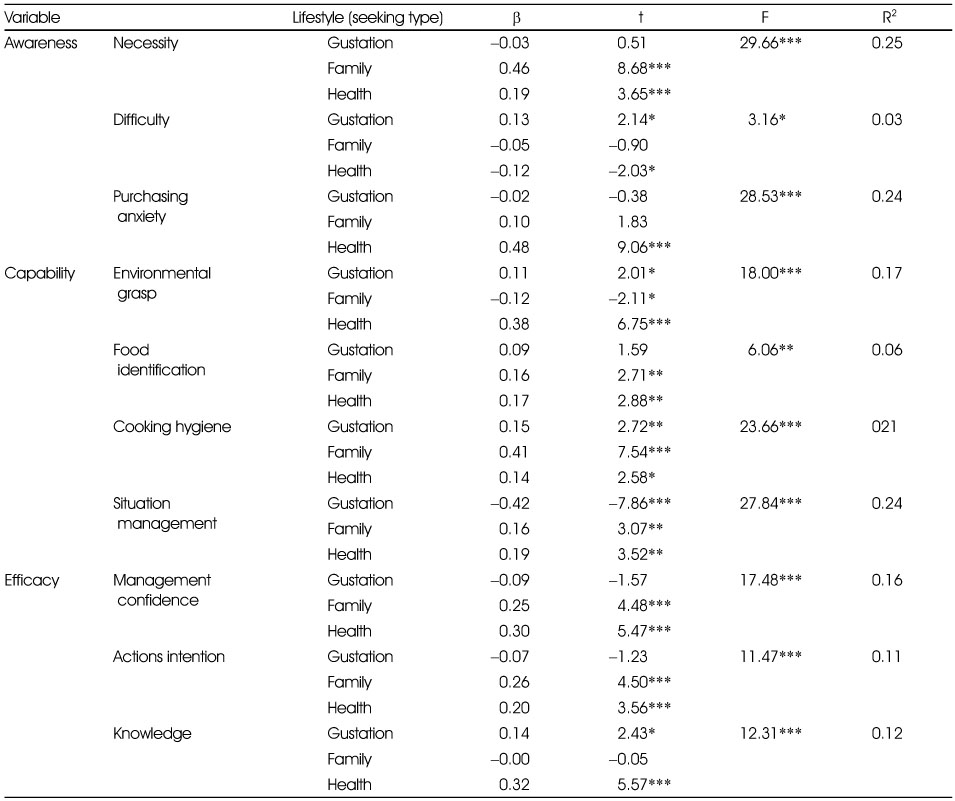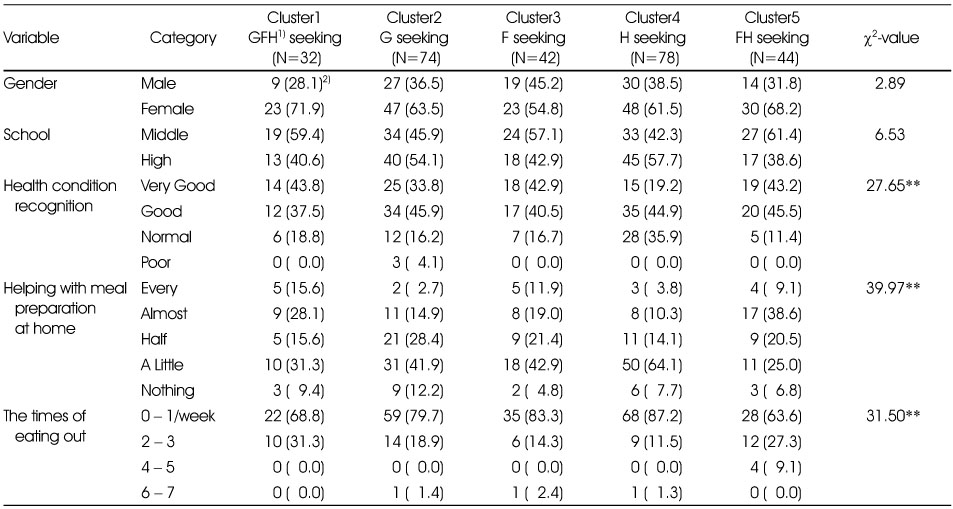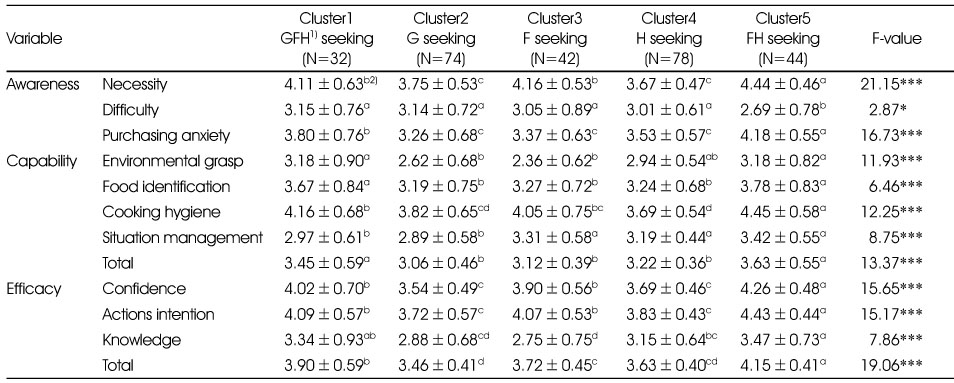Articles
- Page Path
- HOME > Korean J Community Nutr > Volume 21(6); 2016 > Article
-
Research Article
- Adulterated Food Management Characteristics according to Dietary Lifestyles among Adolescents
-
Yunhwa Kim

-
Korean Journal of Community Nutrition 2016;21(6):509-519.
DOI: https://doi.org/10.5720/kjcn.2016.21.6.509
Published online: December 31, 2016
Department of Family Welfare, Daegu University, Gyeongsan, Korea.
- Corresponding author: Yunhwa Kim. Department of Family Welfare, Daegu University, 201, Daegudae-ro, Jillyang-eup, Gyeongsan-si, Gyeongsangbuk-do, 38453, Korea. Tel: (053) 950-7193, Fax: (053) 850-6819, kyhwa47@gmail.com
Copyright © 2016 The Korean Society of Community Nutrition
This is an Open-Access article distributed under the terms of the Creative Commons Attribution Non-Commercial License (http://creativecommons.org/licenses/by-nc/3.0/) which permits unrestricted non-commercial use, distribution, and reproduction in any medium, provided the original work is properly cited.
- 710 Views
- 0 Download
- 5 Crossref
Figure & Data
REFERENCES
Citations

- Study on the Eating Out Behavior and the Status of Meal Delivery and Take-Out Consumption according to the Food-related Lifestyles of Adolescents : Using the Consumption Behavior Survey for Food in 2020
Eun Jung Lee, Hyeon Min Yang, Yeong Ju Lee, Sun A Choi, Jeong Ok Rho
Journal of the East Asian Society of Dietary Life.2024; 34(4): 284. CrossRef - Dietary safety management competency for the sustainable health management of adolescents
Yunhwa Kim
Journal of Nutrition and Health.2022; 55(3): 406. CrossRef - Restaurant Meal Delivery and Take-Out Consumption Behavior according to Adolescents’ Food-Related Lifestyles
Yulee Shin, Minsook Kyung, Seonyeong Baek, Sunny Ham
Journal of the East Asian Society of Dietary Life.2021; 31(3): 172. CrossRef - Predicting adolescents’ behavioural intentions in adulterated food management
Yunhwa Kim
British Food Journal.2019; 122(1): 258. CrossRef - Survey on Foodservice Satisfaction and Dietary Education needs for Improvement of School Foodservice in Middle School Students in Seoul
Kyung-Hee Shin, Youngmee Lee, Wookyoun Cho
Korean Journal of Community Nutrition.2017; 22(2): 127. CrossRef
Awareness, capabilities and efficacy of adulterated food management according to general characteristics of the study participants
1) Mean±SD, Rated with a 5-point Likert scale 1=never, 5=highly.
*: p < 0.05, **: p < 0.01, ***: p < 0.001
abc: means in the same column with different superscripts are significantly different by the result of Duncan's multiple range test.
Correlation of seeking type and awareness, capabilities and efficacy of adulterated food management
*: p < 0.05, **: p < 0.01, ***: p < 0.001
Effect of lifestyle on adulterated food management
*: p < 0.05, **: p < 0.01, ***: p < 0.001
General and dietary characteristics of the study participants according to dietary lifestyles
1) Gustation (G), Family (F), Health (H)
2) N (%)
**: p < 0.01
Adulterated food management of the study participants according to dietary lifestyle group
1) Gustation (G), Family (F), Health (H)
2) Mean±SD, Rated with a 5-point Likert scale 1=never, 5=highly.
*: p < 0.05, ***: p < 0.001
abcd: means in the same with different superscripts are significantly different by the result of Duncan's multiple range test.
1) Mean±SD, Rated with a 5-point Likert scale 1=never, 5=highly. *: p < 0.05, **: p < 0.01, ***: p < 0.001 abc: means in the same column with different superscripts are significantly different by the result of Duncan's multiple range test.
*: p < 0.05, **: p < 0.01, ***: p < 0.001
*: p < 0.05, **: p < 0.01, ***: p < 0.001
1) Gustation (G), Family (F), Health (H) 2) N (%) **: p < 0.01
1) Gustation (G), Family (F), Health (H) 2) Mean±SD, Rated with a 5-point Likert scale 1=never, 5=highly. *: p < 0.05, ***: p < 0.001 abcd: means in the same with different superscripts are significantly different by the result of Duncan's multiple range test.

 KSCN
KSCN





 PubReader
PubReader Cite
Cite


